The Ancient Climate Clues In Caves
12:27 minutes
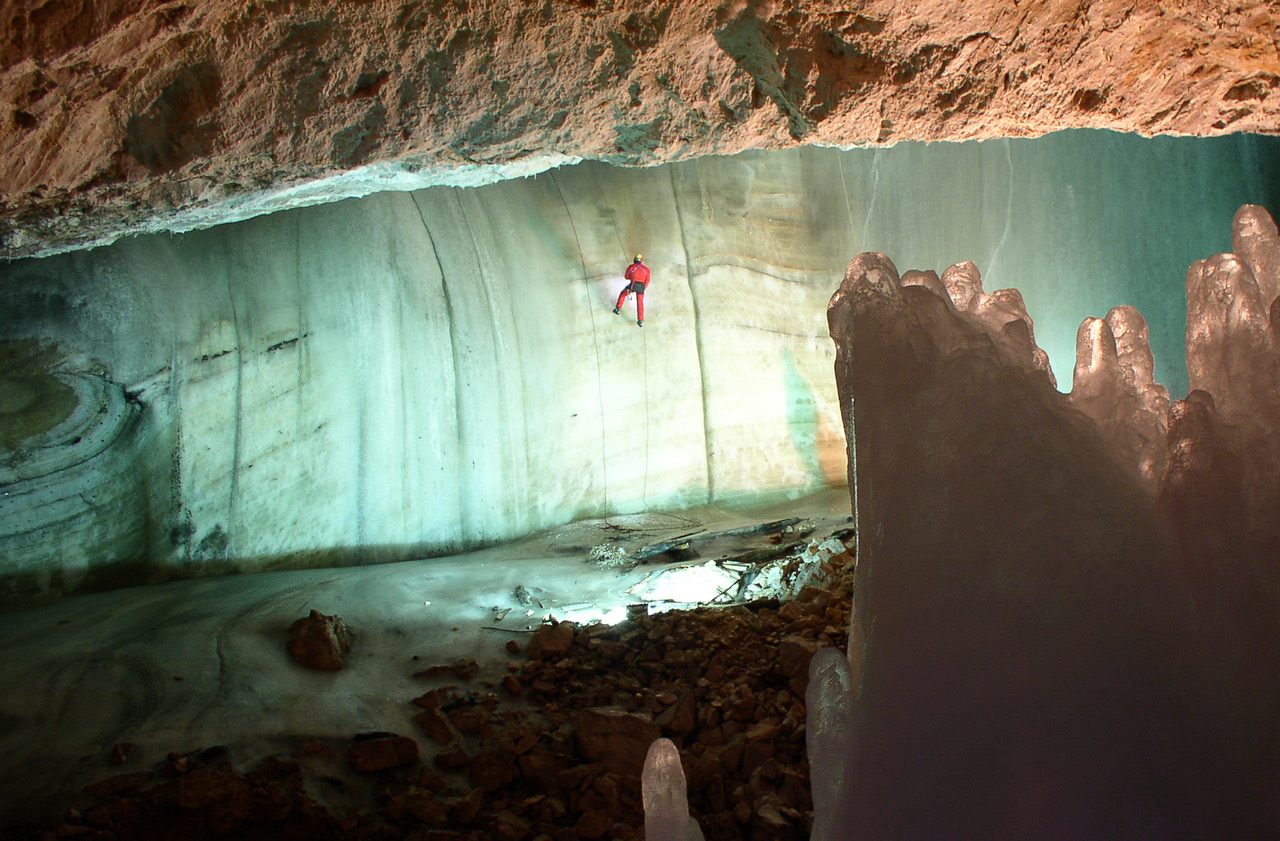
Sea level rise and fall over hundreds of thousands of years. Ancient vegetation. The diets of early human ancestors and the temperatures they lived in. Carbon dioxide in the atmosphere and how it changed over time. All of these are data sought by paleoclimatologists, who study the prevailing climate during times past. And the clues of this data are buried in the rock formations of caves around the world.
[Did you know there are more than 100 varieties of cranberries?]
Paleoclimatologist and cave researcher Bogdan Onac of the University of South Florida travels from New Mexico to Romania to Spain to find the stories hidden in millenia-old cave ice, bat guano, and rock formations. He joins Ira to tell tales from the trail.
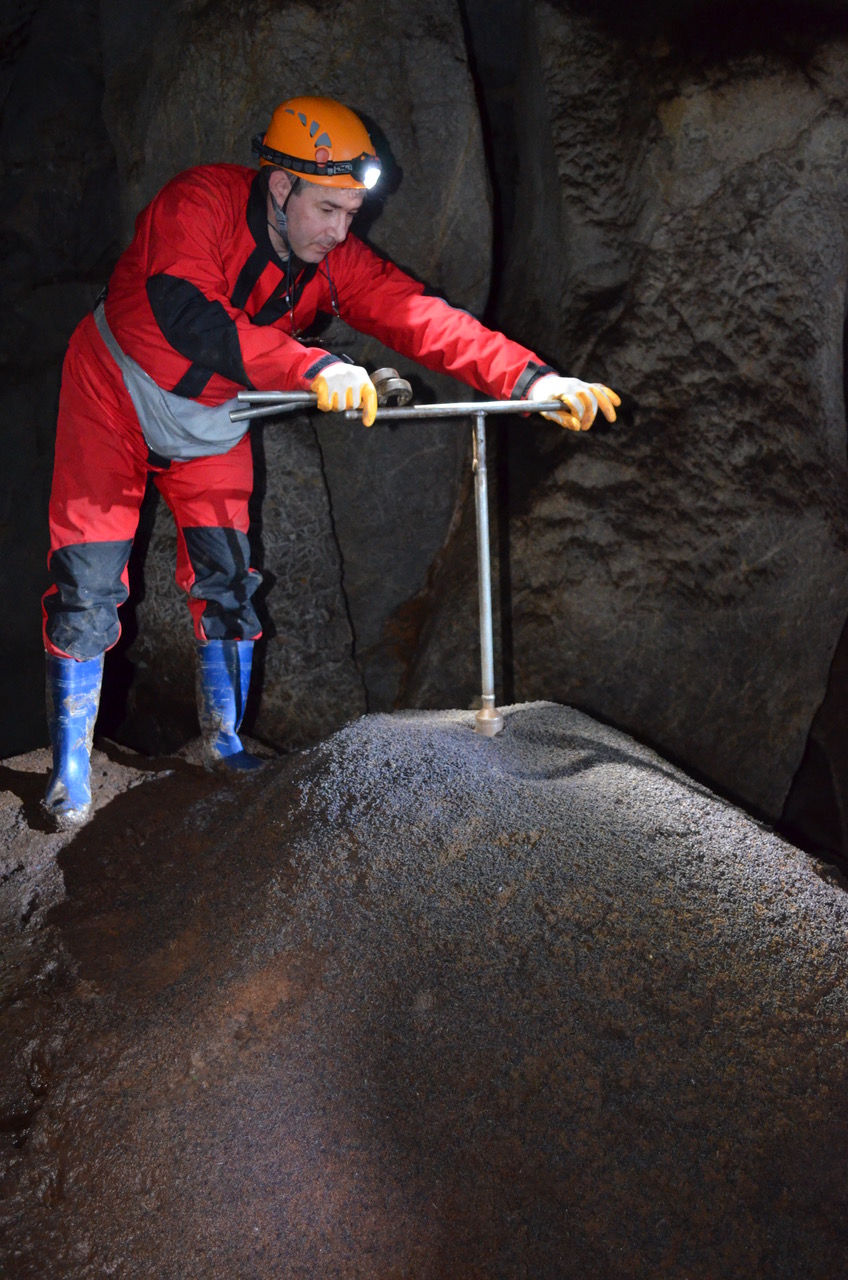
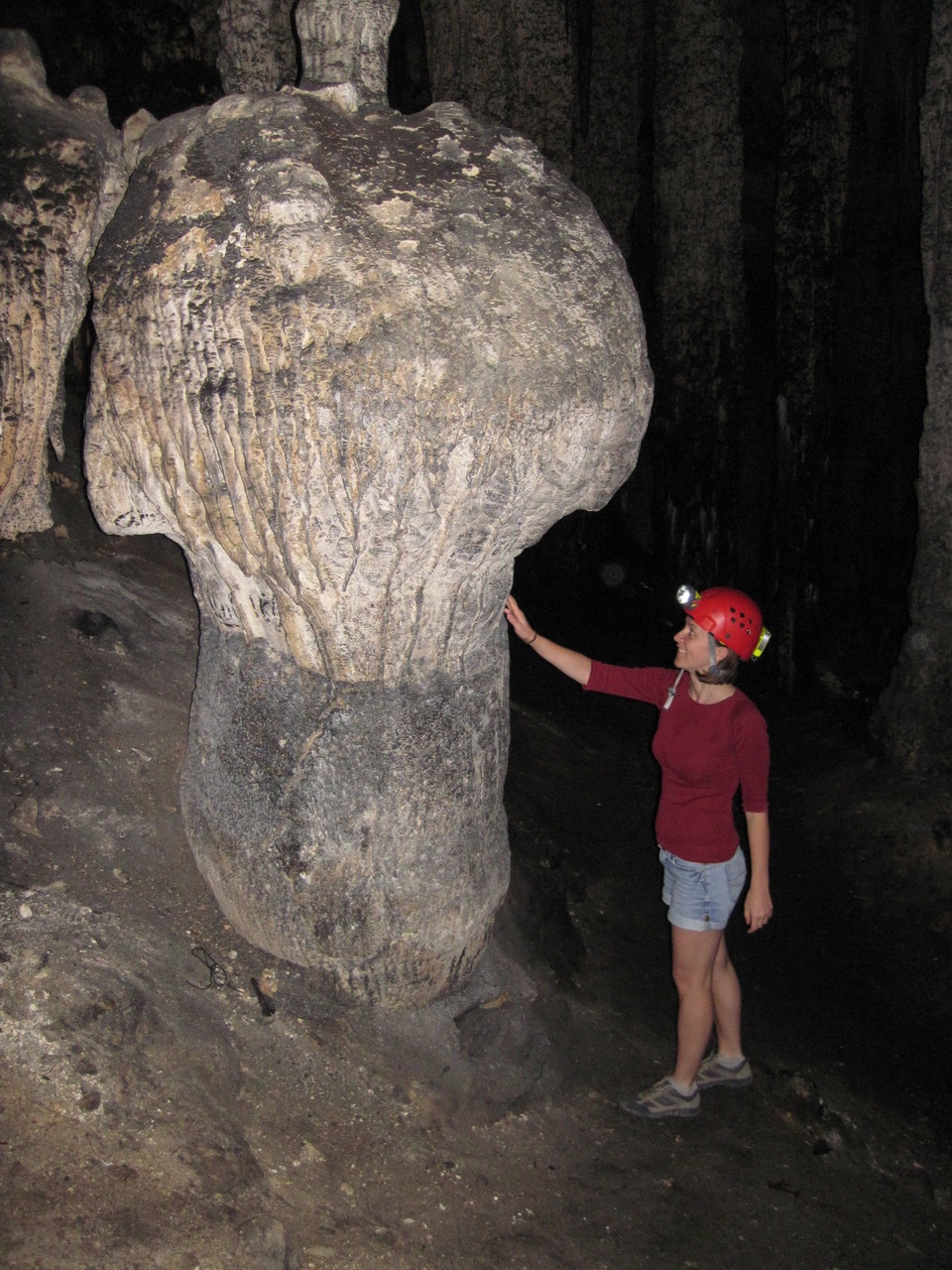
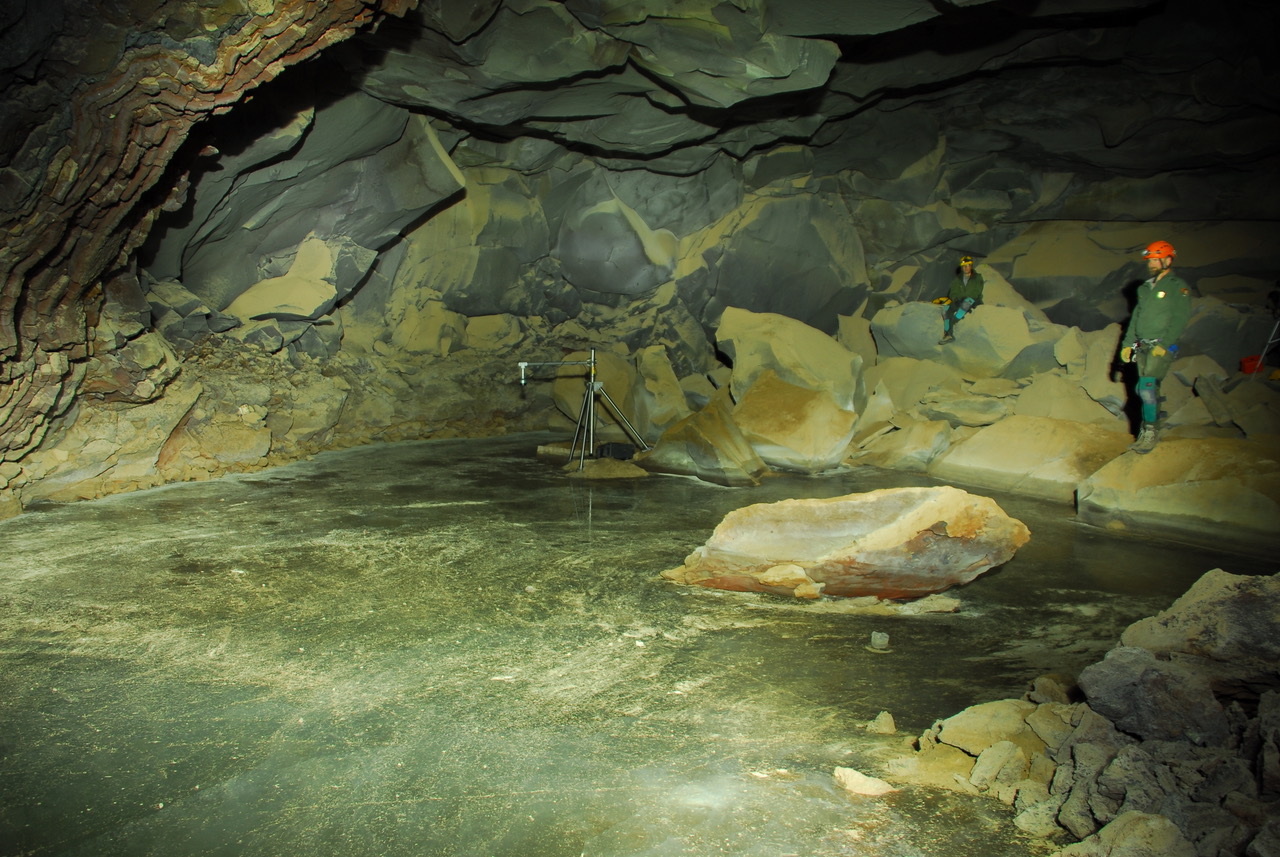
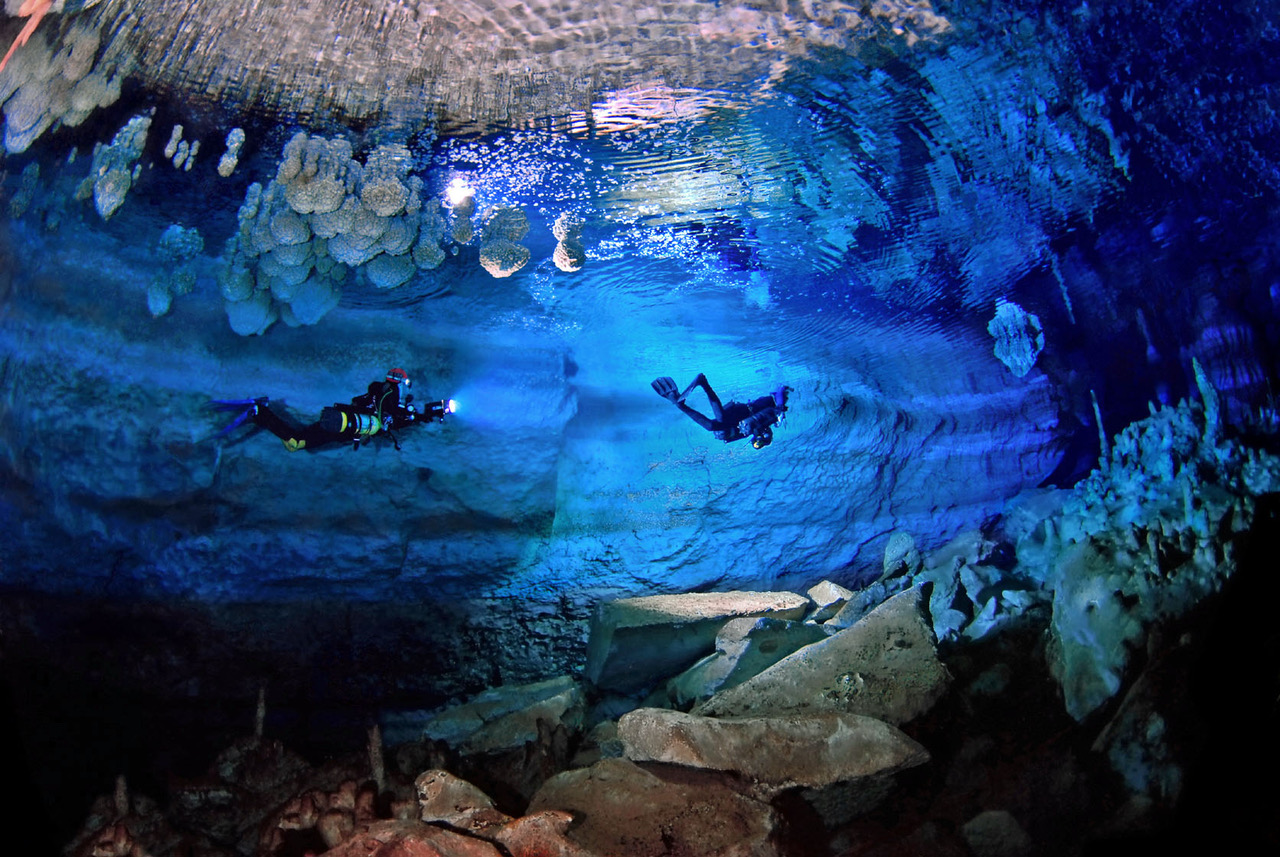
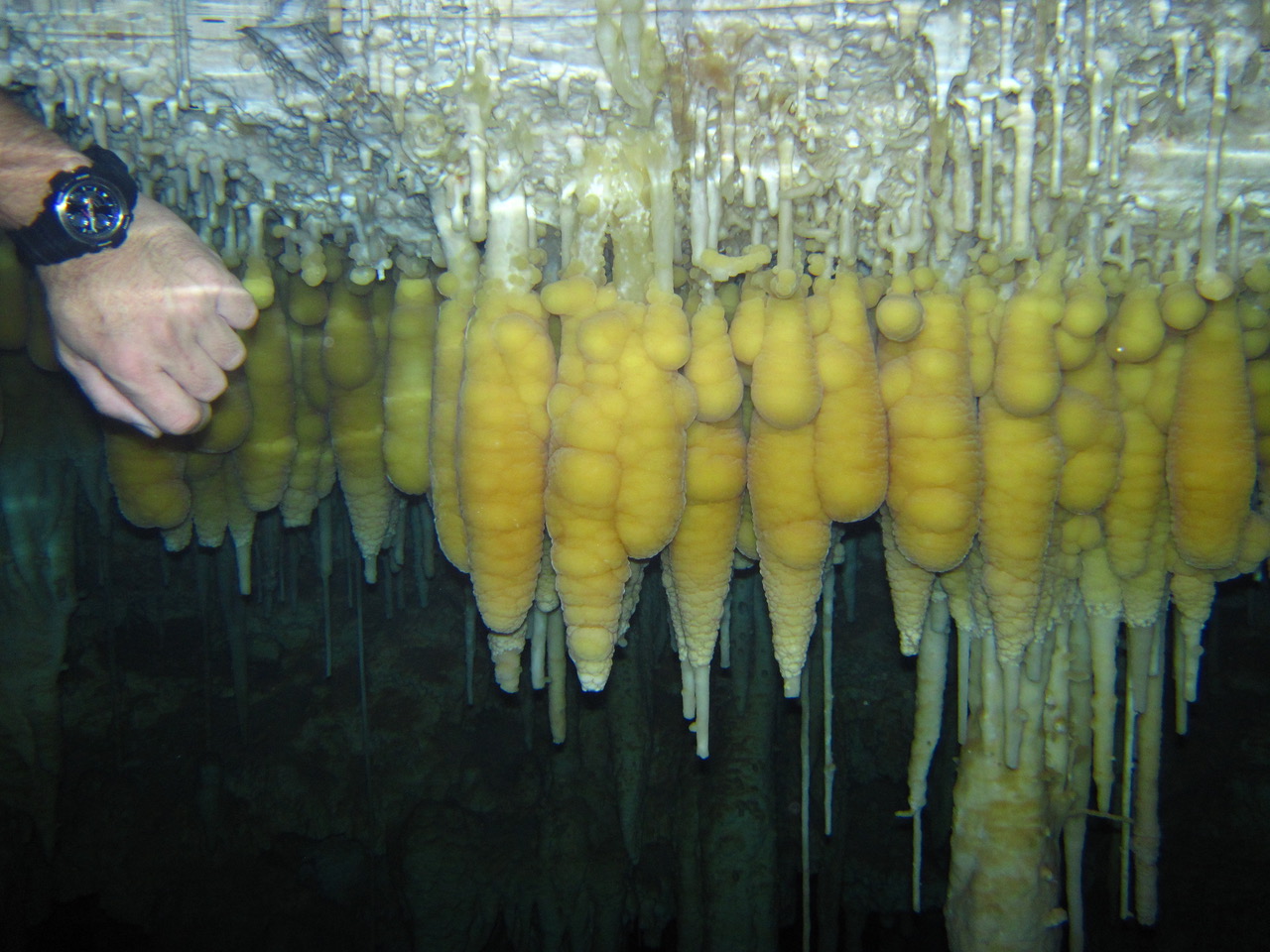
Make an impact this #GivingTuesday with a donation to Science Friday. Your gift will directly support science and journalism.
Bogdan Onac is a professor in the School of Geosciences at the University of South Florida in Tampa, Florida.
IRA FLATOW: This is Science Friday. I’m Ira Flatow coming to you from Tampa Theatre in Tampa, Florida. Unless you’re claustrophobic or afraid of the dark, a cave can be a wonderful place for science. They are natural traps for atmospheric and hydrologic processes. Water drips and minerals precipitate into stalactites and other formations. Or water freezes and gases from the atmosphere remain trapped. Or even bats leave deposits of guano in the same place over thousands of years.
All of these are clues about the climate of our planet thousands or even hundreds of thousands of years ago. And my first guest has roamed the world crawling and even swimming through caves to collect these clues, giant ice sheets in Romania, lava tubes in New Mexico, and in the Mediterranean island of Majorca, ocean flooded caves that hold the keys to how sea levels have risen and fallen over the past 100,000 years. So I want you to welcome Bogdan Onac, a professor in the School of Geosciences at the University of South Florida in Tampa. Welcome, Bogdan.
[APPLAUSE]
BOGDAN ONAC: Thank you for having me.
IRA FLATOW: Bogdan, how can caves tell us about past sea levels?
BOGDAN ONAC: The clue to the past sea level– it was back in the 1970s when some colleagues from Majorca caving, exploring caves, they noticed that there are some bands of minerals of different color that are very nicely aligned. And you can follow them the entire cave. They said, well, wait a minute. What’s going on here?
And then at that time, they just thought, well, that’s a deposit, a mineral deposit, exactly like when you have a lake that stays there for a long time. But because these caves are next to the sea, they said, well, probably it’s the sea level there. And so at the very beginning, in the ’70s, there were no facilities or anything, facilities to date the minerals. And therefore, they just assumed the Mediterranean Sea was moving up and down.
IRA FLATOW: All right.
BOGDAN ONAC: Later on we got this tremendous boost in the analytical facilities. Now we can date. They have a nice sample right here. All these small holes you see there are 17 ages. And this piece of rock grew over the last 2,700 years.
IRA FLATOW: It took 2,700 years for about–
BOGDAN ONAC: To form this [? bulb ?] here.
IRA FLATOW: Just about an inch, inch and a half of [? bulb. ?] Just wow. Wow.
BOGDAN ONAC: And so collecting these samples and starting to date them, we figured out that formation of this size or larger, at different elevation in the caves, they will tell us different ages. And that means different sea levels.
IRA FLATOW: Can you reconstruct the entire history of past sea levels doing this technique? Or do you need other tools?
BOGDAN ONAC: Well, the first hurdle is to find the caves that were old enough, close enough to a sea to be flooded. And so we went first in Florida. And we looked around. Florida is so young, the limestone is so young. And we went to the Bahamas– the same problem. We could not find any cave that’s really old. So when we got to Sardinia and Majorca, the caves themselves are older than 5 million years. So there was plenty of time for the sea level to come in and out, and so left over 40 different distinct layers that we are working on those there.
IRA FLATOW: How do past sea levels correspond to high temperature or a CO2 level, something we might think about climate change or global warming now?
BOGDAN ONAC: Sea level is going up as soon as it’s warming, earth is warming. You know, 20,000 years ago during the last glacial maximum, sea level dropped 100 and something meters. So Florida was the size of Texas.
IRA FLATOW: Is that right?
BOGDAN ONAC: Oh, yeah.
IRA FLATOW: Because all that water was locked up in the ice at that time.
BOGDAN ONAC: Exactly. Once it starts melting, it’s coming down. It’s coming back. Now, the connection with temperature, it’s evident. With the CO2, what we noticed is that back 2.54 million years, the concentration of CO2 in the atmosphere, reconstructed by other specialists, showed that it was higher than today. Temperatures were higher than today, 3, 4 degrees Centigrade. Sea level was 50 meters above present sea level.
IRA FLATOW: Wow. But Bogdan, what’s the surprise here? Is there anything surprising? Isn’t this exactly what we would expect to happen– when you have higher temperatures sea level rises?
BOGDAN ONAC: I mean, we know from other researchers that Greenland and Greenland ice sheets are melting. Antarctica, chunks of Western Antarctica ice is breaking, and getting into the sea like icebergs, and then they melt, sea level will come up. Florida experiences about 3.4 to 4 millimeters per year sea level rise.
IRA FLATOW: Yeah. So you have models of what would happen. And now you’re just collecting the data to show that that’s what’s happening.
BOGDAN ONAC: Yeah. That’s correct. I mean, we are trying to help this community that makes models and make the projection what’s going to be in 2100 and so forth. And so providing precise dates from different locations around the world, whether that’s from the caves or corals, these guys can make better projections for the future.
IRA FLATOW: Wow. What else can the caves tell us?
BOGDAN ONAC: Well, there are many things in the cave. One of the fascinating deposit is when you find ice.
IRA FLATOW: Ice.
BOGDAN ONAC: Yeah. Large ice deposits, like the one you see down in the back. That’s about 17 meters thick wall. Actually, the ice in that cave, it’s 23.5 meters. And it’s about 11,000 years old. So as long as you do take a core out, you do all the isotope analysis for oxygen, for hydrogen, you date different small leaves, pine tree needles, and so forth that came from outside, you have the age. That’s how we know that it’s 11,000 years.
IRA FLATOW: That’s a huge– we’re looking at a picture of a huge ice sheet. How big is that?
BOGDAN ONAC: It’s the largest in the world, actually. It’s 125,000 cubic meters. It’s a big surface. It’s like a huge underground skate place. It’s lovely.
IRA FLATOW: And you can see this on our website at sciencefriday.com. And you take cores of ice? You drill into the ice, get a core?
BOGDAN ONAC: Yeah. We core. We have two cores. One is 23.5 meters. The other one is 25.5. And so we were able to reconstruct what was going on, where the rain was coming from, which water dripped in the cave and accumulated ice over time.
IRA FLATOW: And is that predictive of the future climate?
BOGDAN ONAC: Probably not. I mean, it gives some clues, but not so much. Because compared to Greenland or Antarctica, this is only 11,000 years. In Antarctica you have 800,000 years ice. So this is a small scale. So regionally talking, Europe, it’s going to give us good information.
IRA FLATOW: Interesting. I heard there’s some cool stuff with bat guano in caves.
BOGDAN ONAC: True.
IRA FLATOW: What are we looking at in this picture?
BOGDAN ONAC: Well, we need to core this poop.
IRA FLATOW: Can I quote you on that? #WeNeedToCoreThisPoop.
BOGDAN ONAC: Correct. So when I went first and asked for funds, somebody said, are you crazy? Who’s going to give you money to dig in poop? Well.
IRA FLATOW: A lot of people.
BOGDAN ONAC: Yeah. Well, I got money. And I have a PhD student here who is just about finishing– and incredible information. Because bats are flying and eat insects. Insects are feeding on larvae and other bugs, which are eating leaves. So they take everything in. They digest. And they poop. And the poop accumulates. And sometimes it’s 2,000, 3,000 years old poop.
IRA FLATOW: How old is that one?
BOGDAN ONAC: This one, it’s only 1,200.
IRA FLATOW: But does the vegetation inside also tell you, maybe–
BOGDAN ONAC: What we find in the bat guano are pollen grains. You process all the guano. You take the pollen out. And then the students, they will have to sit hours and weeks and months looking at the binoculars and identifying those grains, telling me what the vegetation was at the surface.
IRA FLATOW: Wow. So you have said that caves are really good places for trapping history. And I can see that. What kind of caves actually do this? Because caves come in a lot of varieties, right?
BOGDAN ONAC: That’s correct.
IRA FLATOW: What kind of caves do this the best?
BOGDAN ONAC: For ice you need to have caves at higher elevation or high latitude. For guano you have to be almost everywhere in the world. The problem is that if you’re in the tropics, the microorganisms will digest and will bioturbate– they will mix the–
IRA FLATOW: They what?
BOGDAN ONAC: They will mix the guano– the poop.
IRA FLATOW: OK. I got it. Got it.
BOGDAN ONAC: And so because of that, we prefer to be in the temperate areas where there are large colonies of bats. Like for instance, in the lava tubes in New Mexico. It’s about 100,000 bats that are coming from Mexico– illegally. And they–
[APPLAUSE]
The problem is they can–
IRA FLATOW: This is Florida, after all.
BOGDAN ONAC: Yeah, well. They are coming, they’re having this maternity colonies, because only during the maternity the females are feeding. And so they poop a lot. But then in the winter they’re going back in Mexico, because it’s warm and nice.
IRA FLATOW: It’s interesting, because we’re looking at pictures of scuba diving in caves, people collecting information. That, to me, is pretty scary. But there are people who are going under the water scuba diving.
BOGDAN ONAC: Yeah, it is.
IRA FLATOW: It’s beautiful.
BOGDAN ONAC: We are fortunate enough to have a very good team in Spain in Majorca. I’m not a diver. I can swim. I can do a lot of things in the caves. But that is something I will never do. And so these guys are going down. And so they collected for us samples from as low as 35 meters below present sea level, these nice shape formations that we date and we work. And we figure out how low Mediterranean Sea and the global ocean was 70,000 years ago.
IRA FLATOW: I see you hate what you do, Bogdan. Tell us what it’s like to spend so much time underground and the kind of work that you do.
BOGDAN ONAC: You know, sometimes it’s fun, like here. It’s nice water, swimming, seeing lots of beautiful things. Sometimes you have to be under 12,000 bats that are pooping on you and you have to collect samples. In the ice caves you are freezing. And you are freezing really badly.
IRA FLATOW: Did you always want to study this?
BOGDAN ONAC: Yeah, I was talking to my wife just before the show. And I said, oh, boy, it’s 41 years since I read the book. I read the book, and I said, that’s what I want to do.
IRA FLATOW: What book was that?
BOGDAN ONAC: It was in Romania. And it was about the caves. And it just knocked me off. And I said, that’s what I want to go.
IRA FLATOW: Well, we’re very happy that you came and shared your interest with us. And we wish you all great success in the future. I want to thank you for taking time to be with us today.
BOGDAN ONAC: Thank you very much
IRA FLATOW: Bogdan Onac, professor of geosciences at the University of South Florida in Tampa. Thanks again for joining me today.
BOGDAN ONAC: Thank you for having me.
[MUSIC PLAYING]
IRA FLATOW: Taking us to the break, our musical guests for the evening, The Jackettes.
THE JACKETTES: Thank you.
IRA FLATOW: This is Science Friday from WNYC Studios.
Copyright © 2018 Science Friday Initiative. All rights reserved. Science Friday transcripts are produced on a tight deadline by 3Play Media. Fidelity to the original aired/published audio or video file might vary, and text might be updated or amended in the future. For the authoritative record of Science Friday’s programming, please visit the original aired/published recording. For terms of use and more information, visit our policies pages at http://www.sciencefriday.com/about/policies/
Christie Taylor was a producer for Science Friday. Her days involved diligent research, too many phone calls for an introvert, and asking scientists if they have any audio of that narwhal heartbeat.